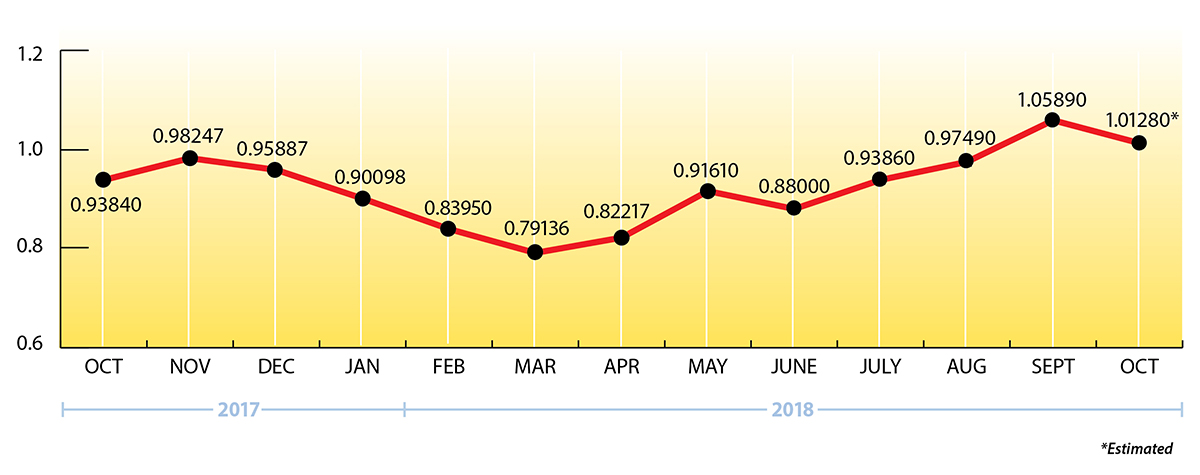Y-Grade Gets An Incomplete
I think the funniest “I Love Lucy” episode is the one where Lucy and Ethel wrap chocolates at a chocolate factory. Their supervisor says “If one piece of candy gets by you and into the packing room unwrapped, you’re fired!”
The conveyor belt starts out slowly and then speeds up, faster than they can keep up with. So Lucy and Ethel start eating the chocolates and stuffing them into their hats and blouses before the supervisor returns to check in on them.
Chocolate production exceeded processing capacity.
What’s Y-Grade?
In some ways, the folks that make propane have a similar problem. Natural gas liquids production has been setting all-time high levels for months now, exceeding both fractionation and take-away capacity. So producers and shippers are forced to go into storage with some of the raw, unseparated mix which is called “Y-grade”, to be separated later into ethane, propane, butane, isobutane, and pentane.
The story is that Y-grade got its name from an old Texas pipeline company that assigned different letters to the various products that they shipped. Y-grade was the designation for the natural gas liquids mix.
Bet You Didn’t Know This!
The weekly inventory numbers for propane that the EIA reports include an estimated percentage of the propane that’s in Y-grade.
So a potentially significant amount of the reported propane in storage – what we believe is readily available for distribution and consumption – may not even be propane yet!
The data that the EIA receives from inventory holders does not allow them to discern how much is propane versus how much is raw mix.
It’s the inventory holder, using historical yields and product knowledge, who estimates the percentage of propane that’s in the Y-grade.
What’s Happening with Propane Prices?
Three years ago the price of crude oil was $27.00 bbl. Propane was 30 cents per gallon.
Since then, every dip in price has simply been a correction (profit-taking, short-selling) in what is essentially still a rising market.
This brings me to a question from a Pennsylvania customer: “How can I tell the difference between a price correction and the start of a lower price trend?”
That’s a great question. And while no one can predict the future, one of two events often precede the start of a lower price trend. We'll discuss that topic in next month’s blog.

EIA Weekly Numbers
US propane inventories (excluding propylene) for the week ending 10/12/18 came in slightly higher than industry expectations with a 1.6 mmbbls. build (79.9 mmbbls. total) and are currently about 5% behind the five-year average.
PADD 2 (Midwest/Conway) inventories built .1 mmbbls. They currently stand at 27.9 mmbbls., only .6 mmbbls. higher than this time last year.
PADD 3 (Gulf Coast/Belvieu) inventories increased by 2.4 mmbbls. They currently stand at 42.7 mmbbls., only 3% ahead of last year, but still 33% behind 2016.
NOTE: We should take the Gulf Coast build with a grain of salt since it's likely that Hurricane Michael adversely affected Gulf Coast exports.
The Skinny
It seems that the major inventory holders of Y-Grade in storage have an advantage in the marketplace. They know something that we don’t.
And since it’s impossible to know the amount of actual propane that’s in storage, it’s very possible that the readily available supply of propane could become surprisingly tight this winter.
No need to worry, though. We maintain significant quantities of “wet gallons” on hand as part of our strategic planning process, so you can always be assured of a reliable supply of propane from Ray Energy.
P.S. We are proud to be a major sponsor of the New York Propane Gas Association's Fall Meeting in Syracuse, NY, on October 29-30, and we look forward to seeing you. And, Glenn's bringing the chocolates!
Get Stephen's insights on propane delivered to your inbox every month.
Sign up for our email newsletter here.
NOTE: The views and opinions expressed herein are solely those of the author, unless attributed to a third-party source, and do not necessarily reflect the views of Ray Energy Corp, its affiliates, or its employees. The information set forth herein has been obtained or derived from sources believed by the author to be reliable. However, the author does not make any representation or warranty, express or implied, as to the information’s accuracy or completeness, nor does the author recommend that the attached information serve as the basis of any buying decision and it has been provided to you solely for informational purposes.
© 2011-2018 Ray Energy Corp. All rights reserved. Any reproduction, representation, adaptation, translation, and/or transformation, in whole or in part by whatsoever process, of this site or of one or several of its components, is forbidden without the express written authorization from Ray Energy Corp.

